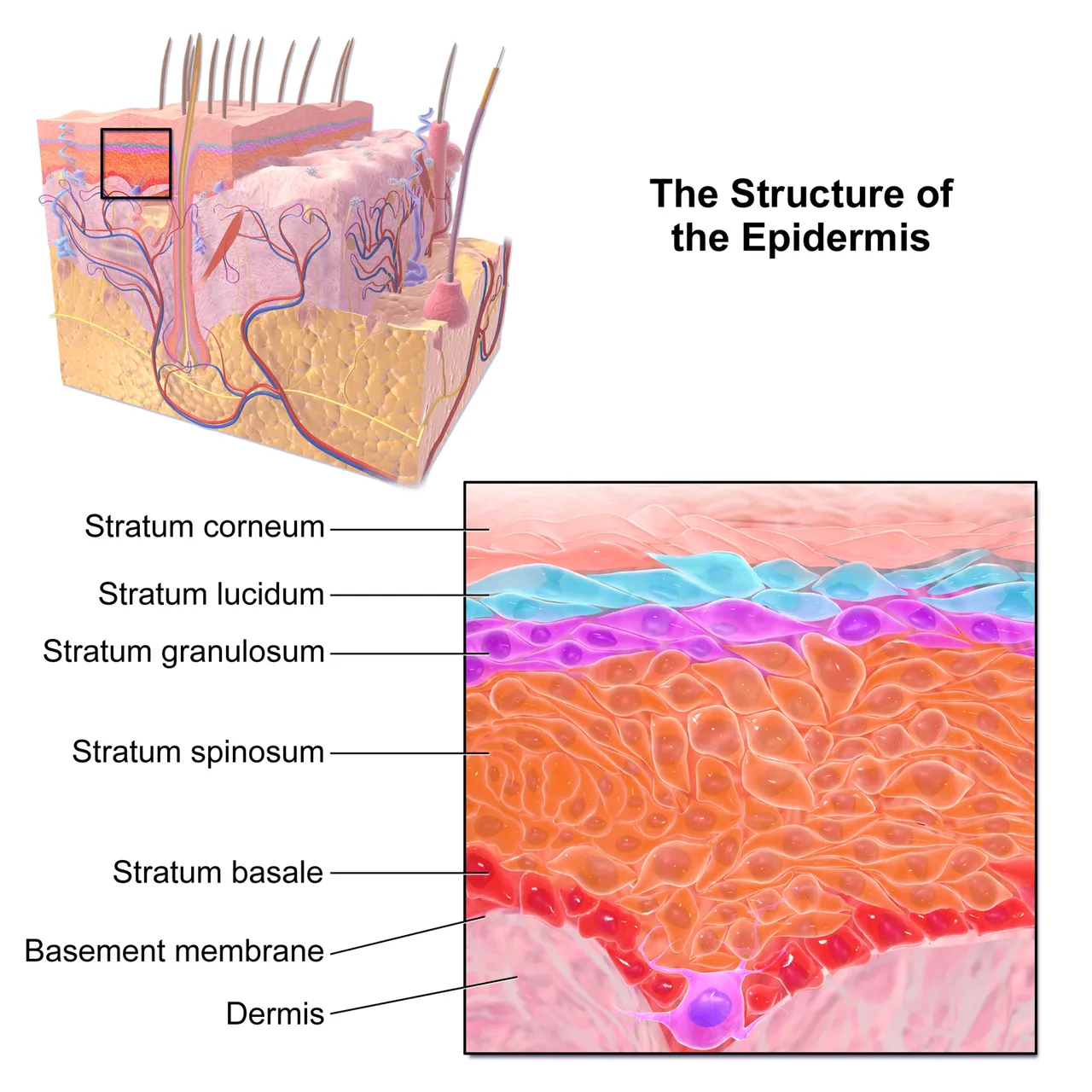Skin colour is one subject that people have argued a little bit about. Some say it arises from genetics, others say it could be due to location and the nearness to the sun. While some are dark-skinned, some are white, some are red, and we have other people with different colour of skins. If location is a factor, then I see so many whites who come as expatriates to my country and give birth here, and their children do not change skin colour due to a change in geographical location. I remember a time someone was saying that people who are light skin do not have melanin in their skin. That is one thing I cannot say for now, but as you go on with this post, you would know if white people have melanin or not. I will be looking at skin colour, what you should know about, and how the colour of our skin is determined
The skin belongs to the integumentary system which is made up of the skin (epidermis, dermis, and hypodermis), hair, nails and the glands. The upper layer of the skin is known as the epidermis, which is a thin layer of the skin at the outermost part of the skin. Some part of the epidermis are thicker like the parm, while most part of the epidermis is thin. The Dermis, which is the majority of the skin diameter. It is the next part of the skin after the epidermis, followed by the hypodermis or the subcutaneous layer, which is made up of Adipose tissue. It is the least part of the skin. The epidermis is for energy storing insulation.
The human skin pigment is found in the epidermis, which means the colour of your skin is determined by the outer part of the skin. The epidermis is made of up of strata of cells. The button pattern of the epidermis is known as the stratum basal, followed by the stratum spinodum. The stratum basal are mitotically active, causing them to divide and go upwards until they reach the uppermost part of the epidermis, then they flake off. Majority of the cells in the epidermis are keratinocytes. It is important to know that the kerotinocyte doesn't make up the skin coloration, the Melanocyte is the cell which produces melanin, which is responsible for the coloration of the skin. The melanocyte is made up of the melanin granule, dendrites, melanosome, golgi apparatus, nucleus, mithochondrium, and rough endoplasmic reticulum. They deposit melanin to the kerotinocyte in the epidermis, causing the kerotinocyte to have color. The more the melanin being produced by an active melanocyte, the more darker the skin becomes. Other cells in the epidermis are Langerhans’ cells, and Merkel’s cell.
In Africa, we tell ourselves that when we go do activities outside, where the sun is scuching, we tend to get darker. Well, this isn't a lie, as the sun activates the melanocytes to produce more melanin to the keratinocytes. But the melanin does protect the DNA from damage and mutation from ultraviolet ray. So people with darker skins are less likely to have skin cancer or burns, as they are more protected from the UV light compared to people with light skin.
It is important to know that the epidermis is an Avascular tissue, so blood doesn't flow into it, so it gets blood from the dermis. It is important that we do not forget the Stratum granulosum, which serves as a water protective layer, preventing water from getting into the skin. Also, the Stratum Corneum are cells that are flattened out that, and are more thick in the parm of the hands and the soles of the feet. Also on the parm of the hand and sole of the feet, is another layer just between the granulosum and the corneum which is the Stratum Lucidum.
Conclusion
At the end of this post, it is important to know that the epidermis is responsible for the color of our skins, and everyone has the melanocyte cell which is responsible for producing melanin in their epidermis. Melanin performs the function of coloration and preventing the DNA from ultravoilent rays of light which could damage the DNA and the cause diseases.
- National Library of Medicine - Physiology, Integument
- Physiopedia - The Integumentary System
- National Library of Medicine - Melanin reduces ultraviolet-induced DNA damage formation and killing rate in cultured human melanoma cells
- National Library of Medicine - Anatomy, Skin (Integument), Epidermis
- Cleveland clinic - Epidermis
- National Library of Medicine - The Protective Role of Melanin Against UV Damage in Human Skin
- National Library of Medicine -Biochemistry, Melanin

